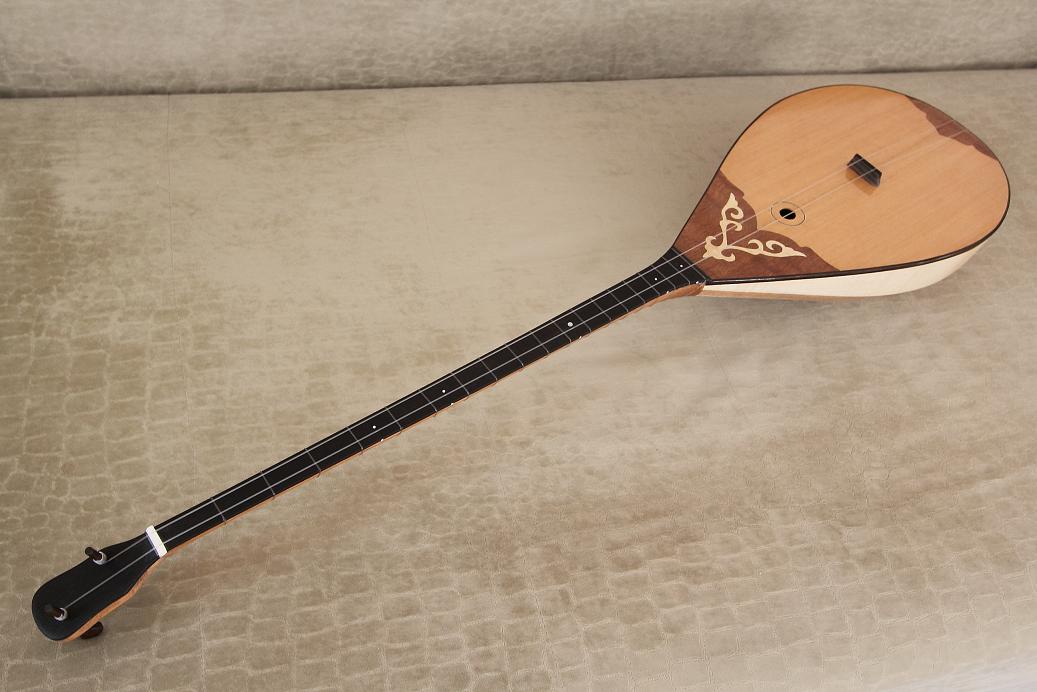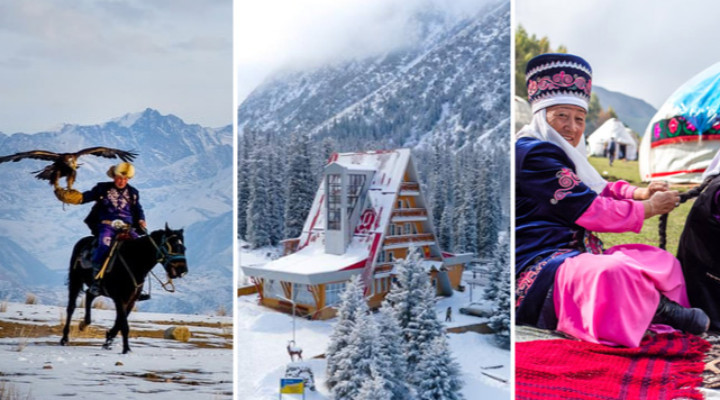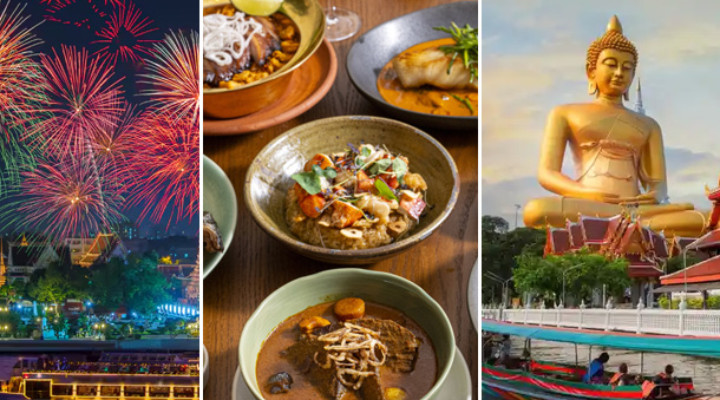Music Of Kazakhstan - From Classic To Contemporary
It will not be unfair to say that we are starting this from the point we left you with in our last article. In previous article we explored a bit of music of Uzbekistan. We will continue with music. This time we will explore a bit about music of another Central Asian country, Kazakhstan. As true for all Central Asian countries, for Kazakhstan also music has been an integral part of Kazakhstan's culture for centuries. As any other part of the world Kazakhstan also plays between traditional folk music and current influence of western music. So what is special or unique about Kazakh music? Before talking about this it is important to note that Kazakhstan takes lot of pride in its music. So let us see some colour of Kazakh music.
Creativity in Kazakh people, impetuous musical and poetical improvisation and involvement of all population, from infants to elderly people, in musical creation has been observed since 18-19th century by foreigners. And as far as history of music is concerned it is said that once upon a time Kazakh nomads sang divine song while soaring high in the sky. People of all age group and sex were said to have a particular type of music with their own set of musical instrument. So what is the instrument of Kazakhstan? Because with instrument best music is created so musical instrument cannot be separated from the topic here. So talking about musical instrument of Kazakhstan, Kazakhstan music is focused around its national instrument, the dombra. A Dombra is a 2-string long-necked lute-type instrument with 7 to 9 frets. The tear shaped instrument is played with either one, two, or five fingers. One of the greatest dombra players was the Kazakh folk musician and composer Kurmangazy, who had a great influence on the development of Kazakh musical culture, including music for the dombra, his musical composition "Adai" is popular in Kazakhstan and abroad. The other instrument playing an important role is the Qobyz, which is a bowed instrument held between the legs. It is made of carved wood for the body, animal skin for the resonator, and horse hair for the strings, and the bow. Zhetygen, a seven-stringed plucking instrument was yet another musical instrument of early time in Kazakhstan.

Talking about traditional vocal music in Kazakhstan it has allot to do with being a part of ceremony such as wedding or as a part of feast. Some songs talked about the facts of past, while some other were love songs. Then there was Russian influence on Kazakh music as well. Russian had influence on Kazakh music because they introduced musical academies here such as Concert houses with Opera stages, so they played and taught European music in these academies. They also incorporated Kazakh music in these academies. So somewhere Kazakh music got connected with ethnic Russian and European music. The Kazakhs themselves, however, did not write their own music in notation until 1931. Later, as part of the Soviet Union, Kazakh folk culture was encouraged in a sanitized manner designed to avoid political and social unrest.
Where does Kazakh music stand today? Today Kazakhstan has quite a vibrant music culture. Along with traditional music in which dombra still plays a part, Kazakhstan has incorporated other genres like classical music, rock and pop. Kazakh artist gain quite an influence from artists in Asia, Russia and US. So it is not surprising to see someone playing dombra and listening Lady Gaga. Despite the heavy influence of western music styles, traditional music is not all lost but yes it is rediscovering itself in Kazakhstan. Young musicians try to mix the traditional music with western music thus calling it 'ethnic contemporary classics'.

This article cannot be complete without mentioning some names of music artists who contributed towards music in Kazakhstan. Abiken Khassenov, Akhmet Zhubanov, Dina Nurpeissova, Kenen Azerbayev, Kurmangazy are only some names in the history of Kazakhstan who contributed a great deal in Kazakh music at different point of time. And yes detailing about these artists demand a full-fledged article which we may see later at some point. For now we leave you with this much about music in Kazakhstan. If you are music lover you must listen to Kazakh music after reading this article.
Also Read: 5 Most Popular Sports in KazakhstanRecent Blogs

Winter in Switzerland: A Magical Wonderland
- by Dook

Winter in France: A Season of Charm and Adventure
- by Dook

Winter in Armenia: Slide Into a Snowy Adventure
- by Dook

25 Best Winter Destinations in Europe
- by Dook

New Year in Russia: A Festive Wonderland
- by Dook

Kyrgyzstan in Winter: Unfold the Silk Road Adventure in Snow
- by Dook

Top 20 Countries to Visit in 2025
- by Dook

Winter in Uzbekistan: A Surreal Getaway to Winter Wonderland
- by Dook

Winter in Kazakhstan: A Snow-filled Holiday Experience
- by Dook

Experience the Magic of Winter in Azerbaijan
- by Dook

Georgia in Winter: An Eternal Journey into Heaven
- by Dook

New Year in Azerbaijan: Ring into the Happening Start!
- by Dook

25 Best Places to Go in Winter in India
- by Dook

Winter in Russia: A Heartfelt Experience for a Snow-Lover
- by Dook

Moscow in Winter: A Fulfilling Guide to Enjoy Snow Holiday
- by Dook

New Year in Armenia: A Joyful Beginning and Radiating Start!
- by Dook

New Year in Turkey- Get Ready for One-of-a-Kind Celebrations!
- by Dook

35 Best Places to Celebrate New Year in India 2025
- by Dook

35 Best Places to Celebrate New Year & Christmas in the World
- by Dook

15 Best New Year’s Eve Cities in Europe to Visit
- by Dook

10 Best Places to Visit in Winter in the World
- by Dook

New Year Celebration in Bangkok: Kick Start the Year in Style
- by Dook

Winter in Serbia: What to do, see, and eat!
- by Dook

15 Unique Things to Do in Armenia on Your Holiday
- by Dook

Winter in Saint Petersburg: Enjoy a Snowy Paradise in Russia
- by Dook

Turkey in Winter: A Heaven-Like Experience
- by Dook

20 Fabulous Rovaniemi Attractions to See
- by Dook

Istanbul in Winter: A Guide to Breathtaking Winters
- by Dook

20 Fascinating Things to Do in Tbilisi & Georgia
- by Dook

